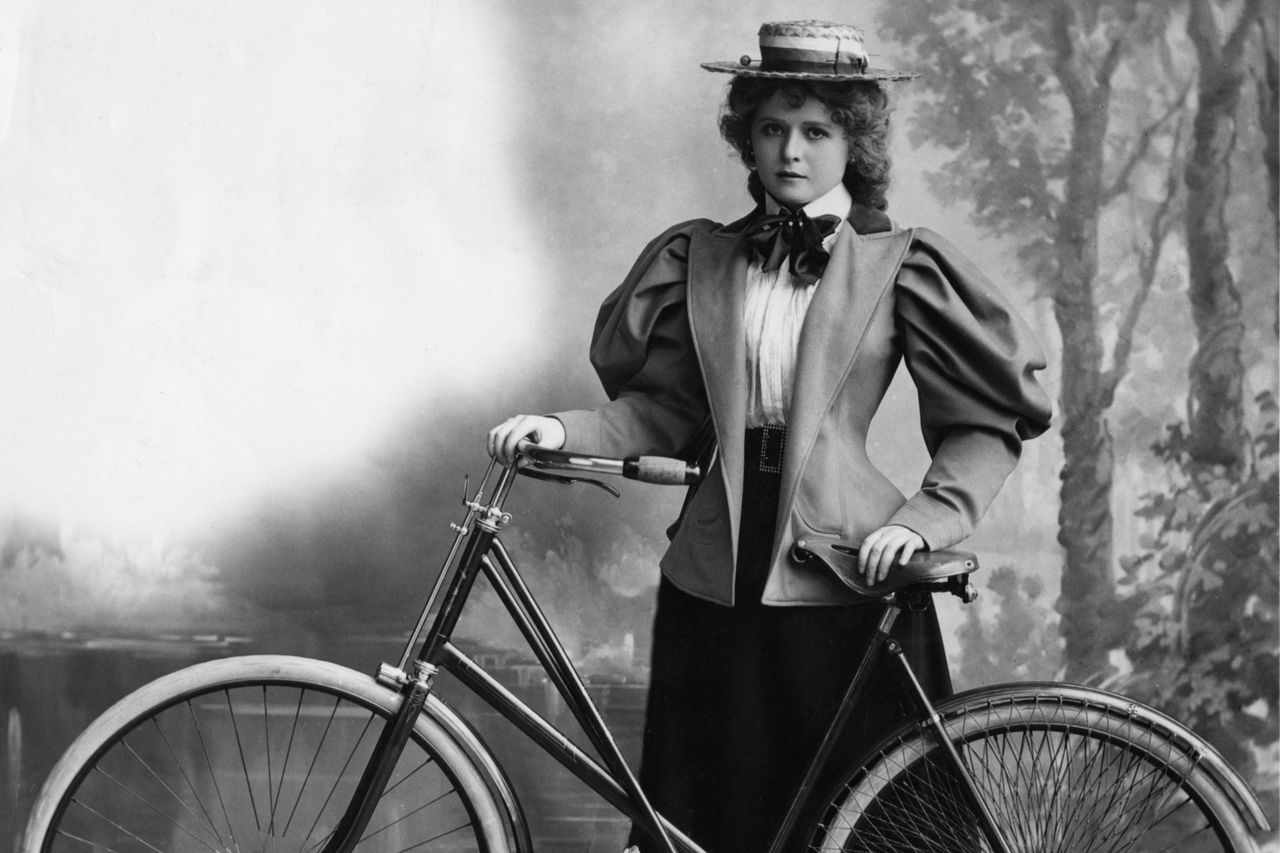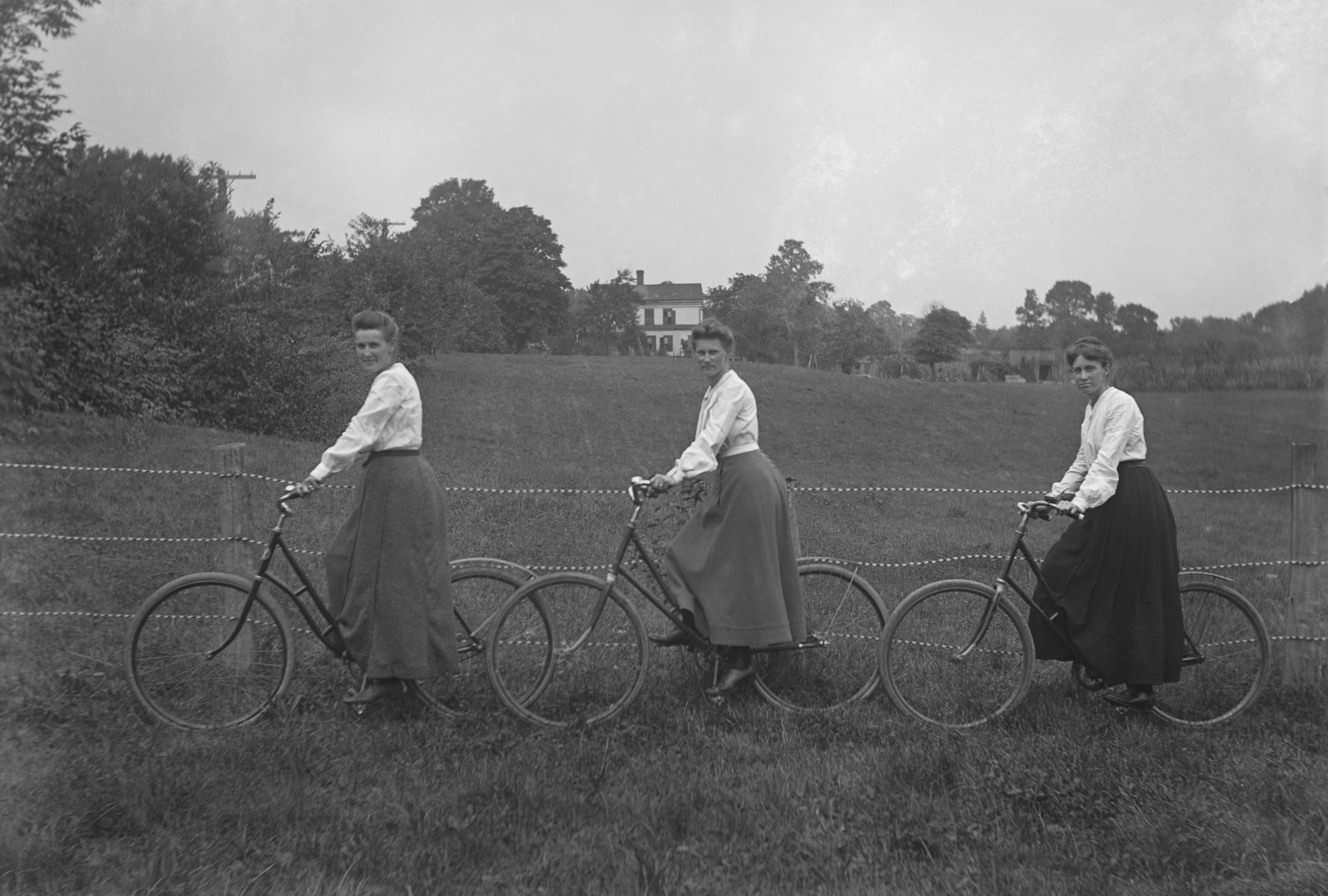Every decade or so, someone resurrects the rumor that cycling causes sterility--or other kinds of sexual dysfunction--in men. And it usually dies down after some prominent cyclist or journalist points out that nearly all top-level racers--and most in the lower echelons--have more than one child.
Hey, when I was riding with the Central Jersey Bike Club, one of our ride captains fathered a child at age 62!
Still, the rumor that cycling causes sterility might make the rounds again soon--especially since we have the Internet now. But even with that technological marvel, another cycling-related rumor probably won't start.
It's not just becaue the rumor has been dead for a century or so. The reason, I think, the rumor I'll metion won't circulate is that it incubated in a social environment very different from what we have today.
That social environment was the first bike boom in America, during the 1890s and the first decade of the 20th Century. In it, women started to unlace their corsets and toss them away--to a large degree because the women began riding bicycles. They were still a decade from having the right to vote, and feminists of that time were working to make it happen. Few things made some religious fundamentalists and social conservatives more leery than women going to the voting booth and choosing the candidates they thought best.
Those fearful men included some doctors and others in the health professions. They were not above making up a condition to scare women out of riding--or to get the men in their lives to discourage or forbid them from getting on their bikes.
What was that malady those doctors concocted? "Bicycle face". Yes, you read that right. "Over-exertion, the upright position on the wheel and the unconscious attempt to maintain one's balance tend to produce a weary and exhausted face," noted the Literary Digest in 1895.

The article went on to describe the condition: "usually flushed, but sometimes pale, often with lips more or less drawn, and the beginings of shadows under the eyes, and always with an expression of weariness".
Hmm...That describes a lot graduate students I've seen.

Hey, when I was riding with the Central Jersey Bike Club, one of our ride captains fathered a child at age 62!
Still, the rumor that cycling causes sterility might make the rounds again soon--especially since we have the Internet now. But even with that technological marvel, another cycling-related rumor probably won't start.
It's not just becaue the rumor has been dead for a century or so. The reason, I think, the rumor I'll metion won't circulate is that it incubated in a social environment very different from what we have today.
That social environment was the first bike boom in America, during the 1890s and the first decade of the 20th Century. In it, women started to unlace their corsets and toss them away--to a large degree because the women began riding bicycles. They were still a decade from having the right to vote, and feminists of that time were working to make it happen. Few things made some religious fundamentalists and social conservatives more leery than women going to the voting booth and choosing the candidates they thought best.
Those fearful men included some doctors and others in the health professions. They were not above making up a condition to scare women out of riding--or to get the men in their lives to discourage or forbid them from getting on their bikes.
What was that malady those doctors concocted? "Bicycle face". Yes, you read that right. "Over-exertion, the upright position on the wheel and the unconscious attempt to maintain one's balance tend to produce a weary and exhausted face," noted the Literary Digest in 1895.

The article went on to describe the condition: "usually flushed, but sometimes pale, often with lips more or less drawn, and the beginings of shadows under the eyes, and always with an expression of weariness".
Hmm...That describes a lot graduate students I've seen.

















